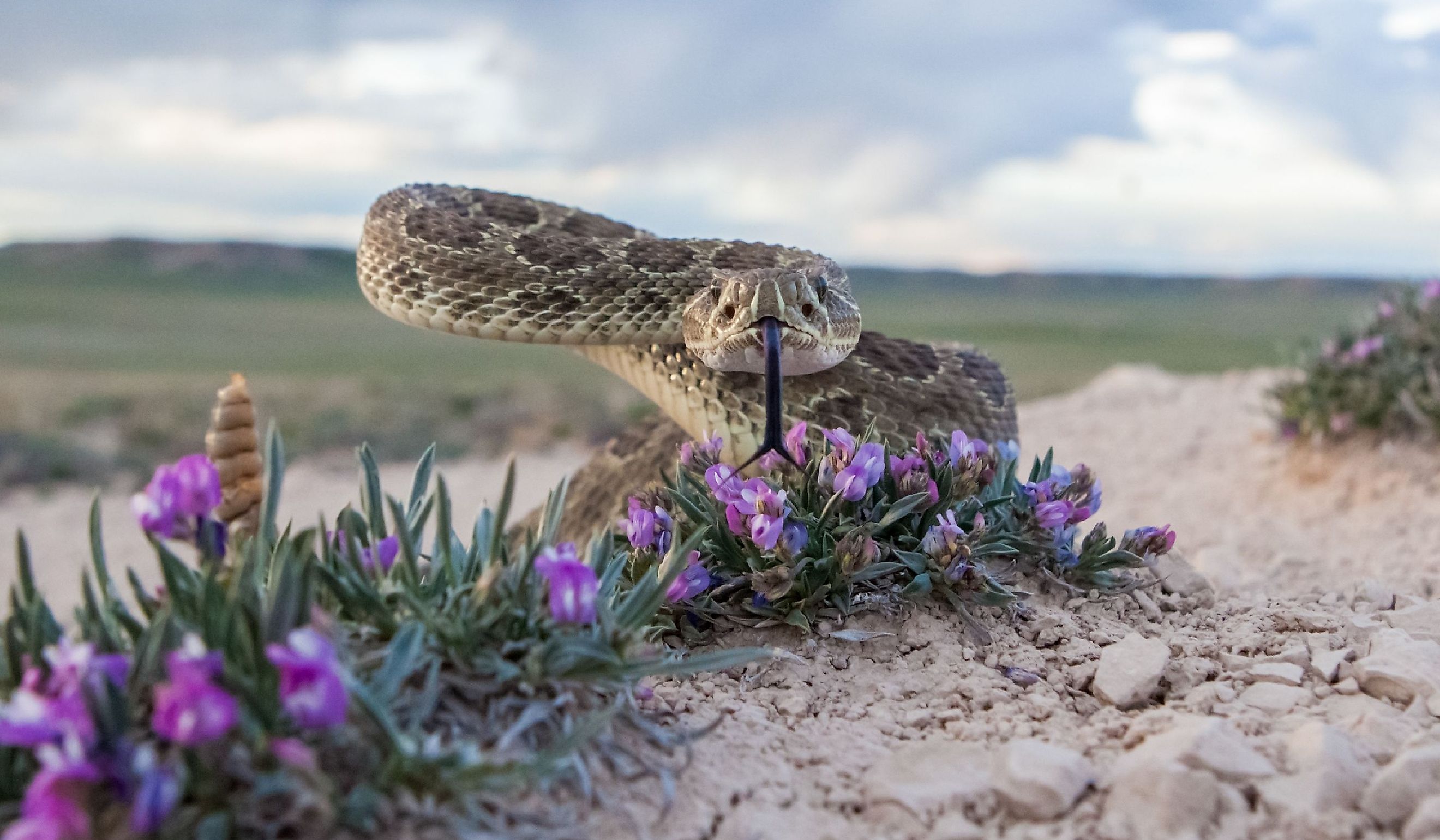
6 Most Rattlesnake Infested Areas in Wyoming
Wyoming, situated in the Mountain West region of the United States, is a state blessed with diverse landscapes. From the 2.2 million acre Yellowstone National Park to the lush Bighorn National Forest, wildlife abounds in Wyoming. While mule deer, bighorn sheep, trout, and grizzly bears are easy to spot in the wild, snakes are often overlooked. These slithering reptiles are spread throughout outdoor areas, and the state is home to over a dozen unique species. Non-venomous snakes pose little harm, but it's the two species of rattlesnakes, the prairie rattlesnake and midget faded rattlesnake, that adventurers need to look out for. This article delves into the most rattlesnake-infested areas in Wyoming so you know when to keep your ears open for the infamous rattlesnake “rattle.”
Bighorn Lake
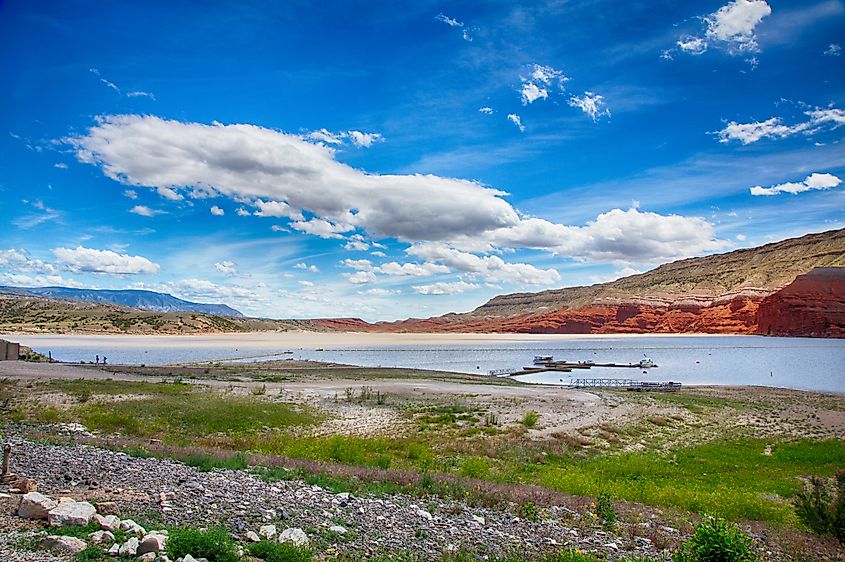
Bighorn Lake is a reservoir in Wyoming's Bighorn Canyon National Recreation Area. This area is a popular outdoor tourist spot, offering hiking, camping, boating, and more activities. The lake is a hotspot for fishing with smallmouth bass, brown trout, burbot, and channel catfish. Ode to the thick foliage, moist soil, and array of small animals for food, prairie rattlesnakes (Crotalus viridis) frequent the lake. These snakes reach a length of around four feet and can be identified by their brown scales and darker patches. Along with resting along the coast, prairie rattlesnakes are also good at swimming, so it is important to be alert when swimming or fishing in Bighorn Lake. Along with rattlesnakes, the area houses bullsnakes and common garter snakes, although these species tend to avoid human interaction.
Slough Creek

In the northern part of Yellowstone National Park, Slough Creek is a tributary of the Lamar River. It is among many streams and rivers in the region where rattlesnakes are common. As the region has moderate vegetation with plenty of rocks along the creek, it is an ideal habitat for prairie rattlesnakes. While sightings aren’t common, Slough Creek is also the site of a campground and hiking trails. To this end, people frequent the banks and can easily be caught off guard by the snakes. Make sure you are carrying basic medical equipment and keep an eye on the ground for snakes. If you are bitten, contact the park rangers immediately for assistance and antivenom.
Green River
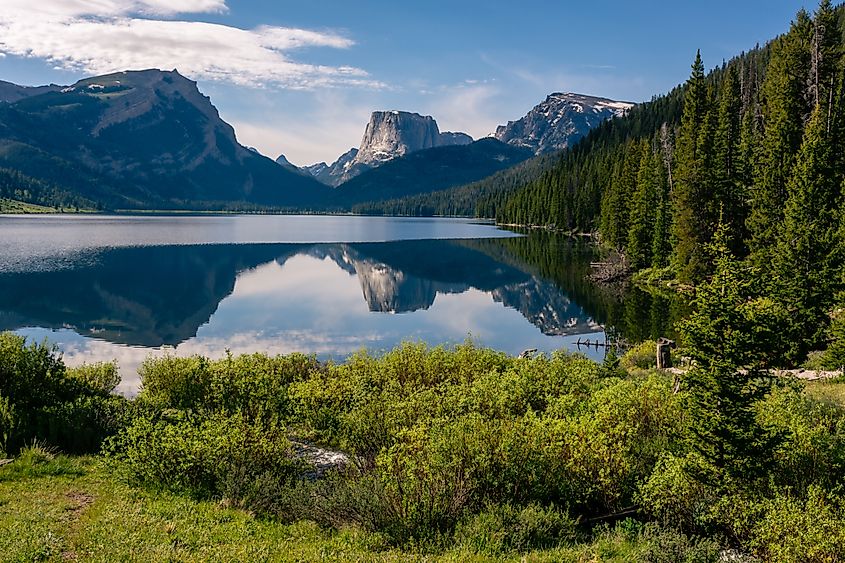
The Green River is one of the few places where midget faded rattlesnakes (Crotalus concolor) are the prominent snake species. This Colorado River tributary spans 700 miles, passing through many wildlife hotspots such as the Colorado Plateau and Canyonlands National Park. These areas feature rocky outcrops and canyon walls, which are ideal for the midget faded rattlesnake. The snake itself is smaller than the prairie rattlesnake, reaching a length of about two feet on average.
Those adventuring along the Green River should look out for their yellowish-brown or reddish coloration with elliptical or dorsal blotches. Thankfully, midget faded rattlesnakes are not aggressive and will not attack unless you step on or near them by mistake. If you are bitten, be sure to seek medical care immediately, as these snakes have one of the most potent venoms in North America. Early symptoms include numbness, swelling, and loss of balance.
Yellowstone Lake
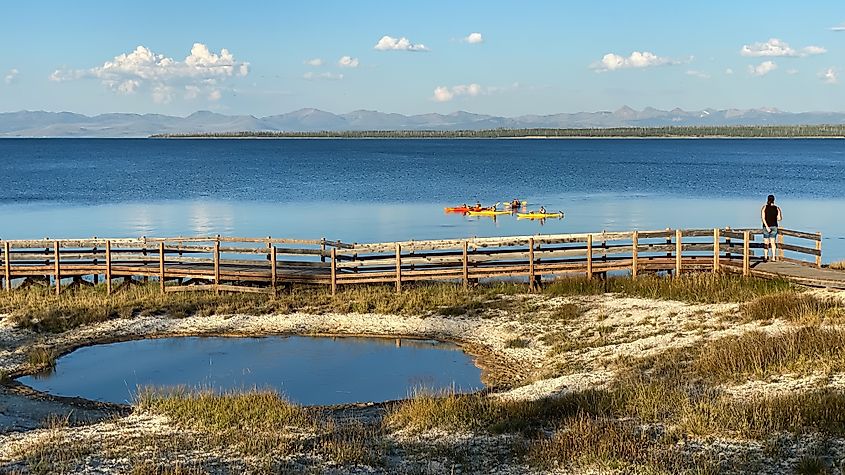
As the name suggests, Yellowstone Lake is a body of water in Yellowstone National Park. Spanning 136 square miles, this is the largest lake in the park and is a hub for tourism and wildlife. When it comes to tourist activity, boating, angling, and fishing are popular activities. Nearby, the Nine Mile Post trail follows the eastern shoreline so visitors can take in all the scenery without getting wet. As for wildlife, this lake is a hub for Yellowstone cutthroat trout, Atlantic salmon, bison, elk, and, of course, prairie rattlesnakes.
The vast 110-mile-long shore offers plenty of ideal locations with rocky hiding spots and vegetation for the prairie rattlesnake. As the only dangerous snake in the park, visitors should be weary when along the shoreline, especially when hiking or fishing, as you can unknowingly step on one of these reptiles. Apart from the prairie rattlesnake, the lake is also home to the terrestrial garter snake, which can be mistaken for a rattlesnake. Remember, if you see patches of dark brown instead of lines, it is best to give the snake a wide berth.
Lower Yellowstone River
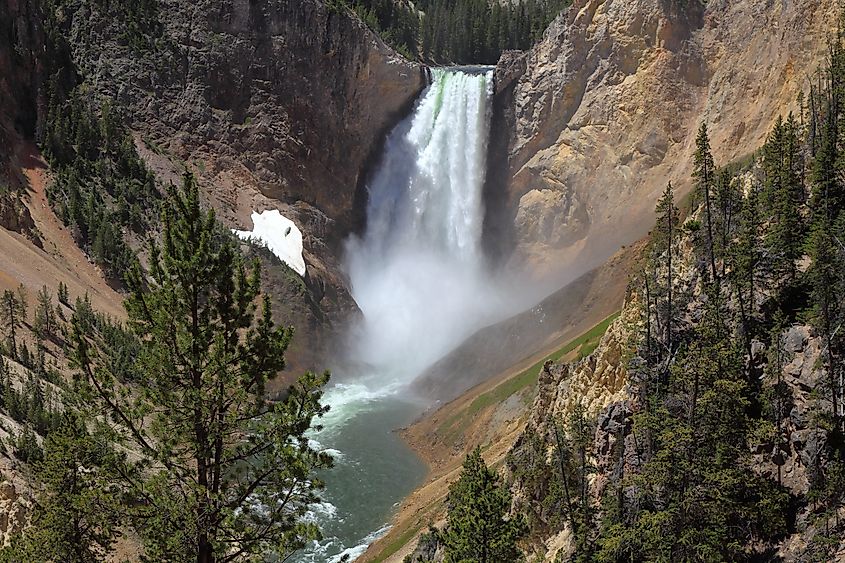
A short distance from Yellowstone Lake, the Lower Yellowstone River is one of Wyoming’s most rattlesnake-infested areas. The climate here is drier and warmer, offering an abode for prairie rattlesnakes in areas like Stephens Creek, Reese Creek, and Rattlesnake Butte. The latter is a popular climbing spot where rattlesnake sightings have taken place. While sightings are common, prairie rattlesnakes tend to be defensive; hence, there have only been two reported bites in the park’s history. So, as long as you maintain a safe distance, there shouldn’t be an issue.
Along with snakes, humans also frequent the Lower Yellowstone River for its ample recreation. Boating is a popular pastime here, thanks to the scenic bluffs, badlands, and foliage along the shoreline. Tourists can also spend their time fishing for bass, wildlife watching for deer, or birding, thanks to the abundant kingfishers and eagles in the region.
Jackson Lake/Snake River
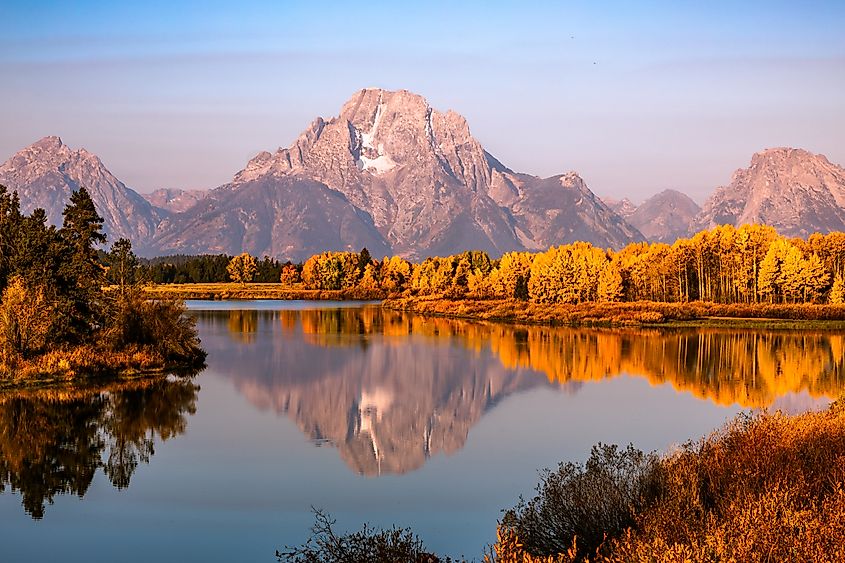
Jackson Lake is a natural lake in Grand Teton National Park that was enlarged by the Jackson Lake Dam. Today, the lake is one of the largest in the state’ with a surface area exceeding 25,000 acres. Jackson Lake is surrounded by verdant forests, rocky areas, and steep mountains, making it a hub for tourism and wildlife. In terms of tourism, Jackson Lake is a boating and fishing hotspot and also has many marinas and lodges along its coast. The Jackson Lake Lodge and Signal Mountain Lodge are among the most popular, and plenty of people head out for hiking nearby.
Snakes are also popular thanks to the lush environment, with the valley garter snake, rubber boa, and prairie rattlesnake among the most common. While rattlesnakes don’t live within Grand Teton National Park’s boundaries, they can be found nearby. Most live further north along the Snake River, especially near Lewis Lake and Heart Lake. That said, sightings are rare, so visitors can enjoy their outings in the lake without too much worry.
Wyoming's diverse landscapes offer breathtaking beauty and a haven for wildlife, including its unique snake species. From the prairie rattlesnake's presence in places like Bighorn Lake and Yellowstone Lake to the elusive midget faded rattlesnake along the Green River, these reptiles are a reminder of nature's balance. While rattlesnakes play a vital role in the ecosystem, their venomous nature requires caution. By staying alert, respecting their habitats, and knowing what to do in case of an encounter, adventurers can safely enjoy Wyoming's stunning outdoor destinations.











